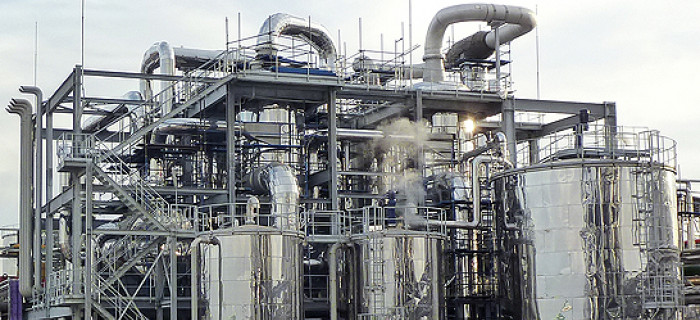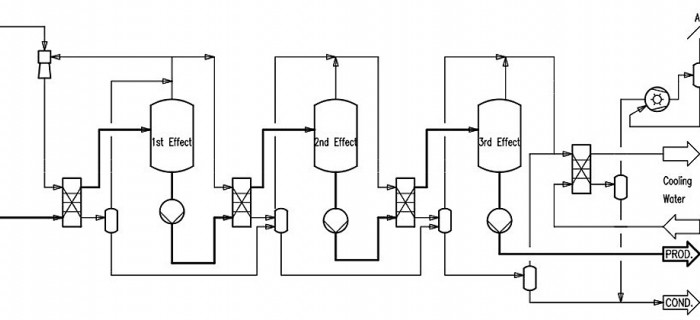Thermally integrated designs
Aiming at lowest possible energy demand, our design considerations also cover the thermal integration of the evaporator within the complete production facility by reusing waste heat from other process groups.
A standard solution in Vogelbusch alcohol plants is the reuse of drier vapors for heating the multi-effect stillage evaporator. By this design the demand of life steam for the evaporator can be reduced to zero.
Alternatively the coupling of distillation/rectification with the evaporator also leads to a significant reduction of steam demand for the concentration of stillage or vinasses.
Also flash vapors as always available in sweetener or alcohol plants are a valuable source for heating product or effluent evaporators.
More about » Thermal integration with distillation units


